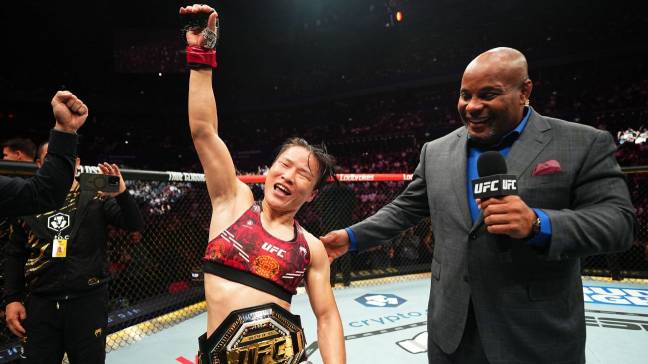Brazilian Jiu-Jitsu (BJJ) has gained immense popularity worldwide, with practitioners constantly seeking the perfect Gi for their training and competition needs. The nomination between a training Gi and a competition Gi is crucial, as each serves unshared purposes.
In this blog, we will explore the key differences between these two types of Gis, including material, design, shape, weight, grabbing capabilities, and their impact on protection versus mat-born infections.
Additionally, we will highlight what makes a unconfined BJJ training Gi and recommend the Revgear Arroyo Gi, known for its affordable price and super flexible material in the right places for maximum maneuverability without compromising protection.
Material
One of the primary differences between training Gis and competition Gis lies in the nomination of material. Training Gis are often made of durable, heavyweight cotton, providing longevity and withstanding the rigors of regular training. On the other hand, competition Gis are usually crafted from lighter materials like pearl weave or ripstop fabric. This lighter construction allows for increased mobility and breathability during high-intensity matches.
Design
Training Gis tend to have a simpler design, focusing on tautness and functionality rather than flashy aesthetics. They often full-length reinforced stitching and sturdy lapels to withstand rigorous training sessions. Competition Gis, on the other hand, often showcase increasingly intricate designs and embroidery, reflecting the athlete’s personal style.
Shape
Training Gis typically have a increasingly relaxed and roomy fit to unbend the wide range of movements performed during training. Competition Gis, on the contrary, are designed with a increasingly tailored fit to minimize an opponent’s worthiness to grab and manipulate the fabric.
Weight
Training Gis are often heavier due to their thicker fabric and reinforced construction. The widow weight can help simulate real-life scenarios and build strength during training. Competition Gis, on the other hand, aim for a lighter weight to enhance agility and speed during matches.
Grabbing Capabilities
The nomination of material and diamond profoundly influences the gripping and grabbing capabilities of the Gi. Training Gis with a heavier fabric and reinforced areas provide increasingly substantial grips, permitting practitioners to develop their techniques and grips effectively. Competition Gis, with their lighter weight and increasingly tailored fit, minimize the opponent’s worthiness to secure worthwhile grips.
Protection versus Mat-Borne Infections
Both training Gis and competition Gis play a role in protecting practitioners versus mat-born infections. The material used in Gis should be moisture-wicking and antimicrobial, helping to prevent the growth of yes-man and fungi. However, training Gis often have thicker and increasingly durable fabric, which can offer an uneaten layer of protection versus the mat’s surface, reducing the risk of skin abrasions and infections.
Reinforcement and Durability
Training Gis are built to withstand the demands of rigorous training, featuring reinforced stitching, sturdy collars, and reinforced knee panels. Competition Gis, while still durable, may prioritize lightweight construction over lattermost durability, as they are intended for occasional use during competitions.
Compliance with Competition Regulations
Competitive BJJ events have specific regulations regarding the design, material, and fit of Gis. Competition Gis are designed to pinion to these rules and guidelines, ensuring that practitioners can compete without facing disqualification. Training Gis, however, do not need to conform to these strict regulations and can provide increasingly flexibility in terms of diamond and material choice.
Cost
Training Gis are often increasingly affordable than competition Gis due to their simpler diamond and heavier construction. They are designed to withstand the wear and tear of regular training sessions, making them a cost-effective nomination for practitioners. Competition Gis, on the other hand, may be pricier due to the use of specialized lightweight materials and intricate designs.
Personal Preference
Ultimately, the nomination between a training Gi and a competition Gi depends on personal preference and training goals. Some practitioners may prefer the tautness and functionality of a training Gi for their day-to-day training, while others may opt for a lighter, increasingly tailored competition Gi for specific competitions. It’s important to consider individual needs, style, and the intended use of the Gi when making a decision.
Choosing the right Gi is essential for any BJJ practitioner, considering the differences between training Gis and competition Gis. While training Gis focus on durability, functionality, and affordability, competition Gis prioritize lightweight construction and trueness to competition regulations.
The Revgear Arroyo Gi is an spanking-new recommendation for a unconfined training Gi, known for its affordable price and super flexible material in the right places for maximum maneuverability without compromising protection.
Remember, finding the perfect Gi is a personal journey that should uncurl with your training goals and preferences, ensuring a well-appointed and rewarding BJJ experience.

![Resistance Band Chest Exercises .pdf [2023]](https://seoandmma.files.wordpress.com/2023/03/resistancebandpressup.png)









